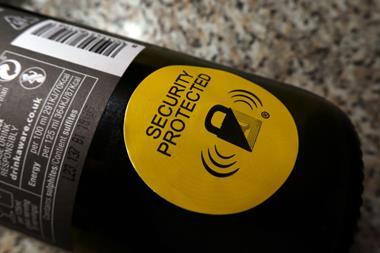
2 (2)
Smirnoff
Sales: £479.4m Growth: +1.2%
Britain’s biggest voddy is £5.7m bigger than it was a year ago, thanks in no small part to the £4.5m We’re Open ad campaign aimed at tying the brand to cultural events such as Pride.
But Smirnoff’s growth has been undermined by the sheer size of its portfolio. If our top 100 were a ranking by portfolio size, this would be Britain’s biggest booze brand by a country mile, thanks to the roster of 30 products currently trading under the Smirnoff banner in the supermarkets. And there’s the rub. The £15.3m growth of No.21, which accounts for almost 90% of Smirnoff’s sales, has lost some of its shine due to steep losses sustained by Smirnoff Ice and many of the brand’s flavoured vodkas and RTDs. Only No.21, Ice Double Black, Vanilla and premix Cosmopolitan and Moscow Mules are in growth.
Not that Diageo plans to do a Magners (52) and axe SKUs that aren’t pulling their weight any time soon. “I accept some innovations we put out have a very strong year one and then we have a year two that doesn’t match that performance,” says off-trade sales director Guy Dodwell. “But the long term is our priority. It’s about making sure the number of launches can be supported.”
That Smirnoff Gold - the gold leaf cinnamon vodka launched in 2013 - has seen sales sink 27.7% to £3.7m in the past year doesn’t mean it’s facing the chop. Indeed, with an average price of £24.99 a litre (versus £18.65 for No.21), Gold represents a key trend in British booze: premiumisation. The April 2015 launch of Smirnoff Ice Double Black - fetching an average of £6.46 a litre - is another example, as are the Smirnoff Cider products unveiled last month. “There are already a lot of players in fruit cider so we knew we needed to do something different,” says Dodwell of the passionfruit & lime and raspberry & pomegranate ciders, which carry an rsp £2.29 per 500ml and a deal price of £1.99.













No comments yet